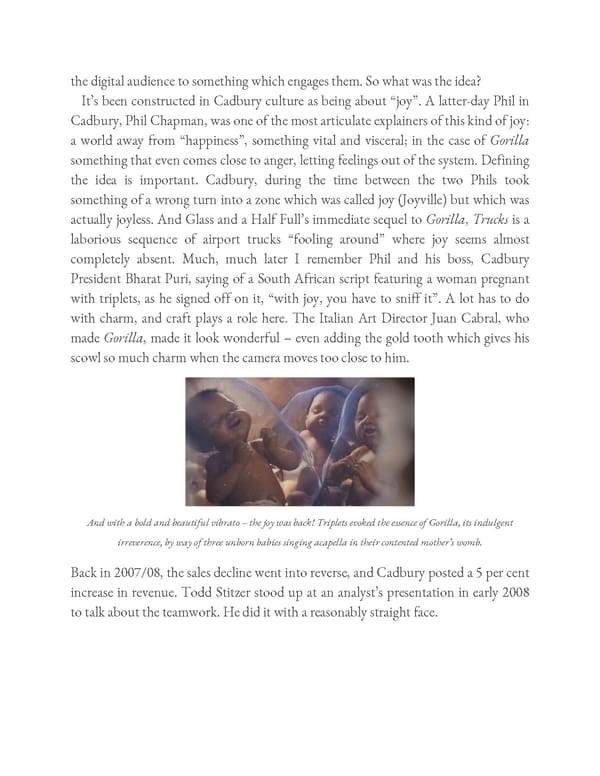the digital audience to something which engages them. So what was the idea? It’s been constructed in Cadbury culture as being about “joy”. A latter-day Phil in Cadbury, Phil Chapman, was one of the most articulate explainers of this kind of joy: a world away from “happiness”, something vital and visceral; in the case of Gorilla something that even comes close to anger, letting feelings out of the system. Defining the idea is important. Cadbury, during the time between the two Phils took something of a wrong turn into a zone which was called joy (Joyville) but which was actually joyless. And Glass and a Half Full’s immediate sequel to Gorilla, Trucks is a laborious sequence of airport trucks “fooling around” where joy seems almost completely absent. Much, much later I remember Phil and his boss, Cadbury President Bharat Puri, saying of a South African script featuring a woman pregnant with triplets, as he signed off on it, “with joy, you have to sniff it”. A lot has to do with charm, and craft plays a role here. The Italian Art Director Juan Cabral, who made Gorilla, made it look wonderful – even adding the gold tooth which gives his scowl so much charm when the camera moves too close to him. And with a bold and beautiful vibrato – the joy was back! Triplets evoked the essence of Gorilla, its indulgent irreverence, by way of three unborn babies singing acapella in their contented mother’s womb. Back in 2007/08, the sales decline went into reverse, and Cadbury posted a 5 per cent increase in revenue. Todd Stitzer stood up at an analyst’s presentation in early 2008 to talk about the teamwork. He did it with a reasonably straight face.
 Ogilvy on Advertising in the Digital Age Page 171 Page 173
Ogilvy on Advertising in the Digital Age Page 171 Page 173